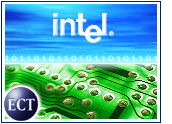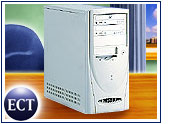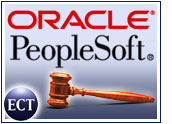
In part 1 of this story, “Inside the Hidden World of Motherboard Manufacturers,” we examined the inner workings of the motherboard industry and noted that unlike in the semiconductor sector, there are many companies competing for market share, including a few strong players and a wealth of second-tier rivals.
Perhaps as a result, NVidia general manager Drew Henry told the E-Commerce Times that rather than relying on a single motherboard manufacturer, his company maintains close ties with each company in the sector.
Henry explained that these manufacturers are not solely focused on motherboards; instead, they may create other products as well, such as optical disk drives and USB devices. This multiple focus is one reason why there is no clear front-runner in the motherboard industry.
Need for Diversification
Cranking out interesting products, such as USB flash storage devices, is not simply a way for motherboard companies to pass the time between producing new chipsets. Nor is it a tactic solely intended to increase profits.
Jeremy Smith, a spokesperson for motherboard manufacturer ABIT, told the E-Commerce Times that in the last few years, there has been consolidation in the sector, especially because so many motherboard companies are geographically clustered in Taiwan.
He noted that many functions of the mainboard also have become integrated into the chipset, so motherboard companies have had to find other ways to be distinctive. In other words, selling a wide variety of products helpseach company maintain a unique image and, more importantly, build a broader customer base.
“ABIT is continuing to diversify the product line to maintain our market presence,” Smith said. “For example, we’ve now made an SFF miniPC.”
Jockeying for Position
This urge to differentiate is especially strong in the second-tier space, where many motherboard companies face stiff competition.
ABIT’s Smith said many manufacturers are working to combat this difficult situation by expanding their R&D and marketing departments. He also noted that relentless branding and promotion is a given at every motherboard company.
However, even the world’s best marketing program is useless if a company’s factory cannot keep up with demand.
“In the next couple years, many second-tier manufacturers may not be able to survive,” said Jack Chen, spokesperson for motherboard maker AOpen.
He also told the E-Commerce Times that although producing non-motherboard devices can make a company unique, this is a tricky balancing act, because too much diversification can weaken the company.
“They have so many products they’re trying to leverage that when it comes to the motherboards, their volume is not there,” Chen said. “Once that happens, they can’t survive.”
Money Market
Another challenge facing individual motherboard companies is the need to sell products to a widely varied audience while still keeping costs low.
A motherboard can cost between US$40 and $60, with higher-priced offerings usually made by companies, known as “captive” manufacturers, that produce boards for only a single customer company such as Dell or HP.
Intel manager Jeff Klaus noted that one major issue in the industry is the need to reduce materials costs. “They’re striving for that,” he told the E-Commerce Times. “As the need for new technologies comes, they have to raise their average selling prices, which is tough on their margins.”
Also, as companies seek to tighten IT budgets and demand more power from platforms at lower prices, it is motherboard manufacturers that feel much of the heat.
“There’s a customer perception that motherboards should be doing more,” Klaus said. “But at the same time, these companies are facing higher costs because of design changes. It’s a struggle.”
Bright Outlook
Despite challenges, though, many companies in the motherboard industry seem to view the waters ahead as fairly calm.
This sanguine outlook is based on the fact that the computing world is expanding fast, and chipsets are being inserted into devices that never needed computing power before, such as refrigerators and VCRs. The more processors are used, of course, the greater the demand for motherboards.
As Gartner analyst Martin Reynolds told the E-Commerce Times: “The future is in variation. The PC market is slowing down, and all the innovation is being seen in motherboards, as we get smaller form factors and see PC functionality where you didn’t see it before.”
Strong Fronts
The home entertainment realm seems most poised for change. The rise in gaming, personal video recorder sales and use of media PCs is a collective bright light on the horizon for motherboard makers, and they are all moving toward it.
Also attractive is the fact that more employees are seeking to take their work home, increasing demand for products that can make thetelecommuting process easier.
As ABIT’s Smith said: “We’ll be seeing more products that are geared toward home and office integration. Also, you’ll probably see more finished products that provide needed linkage between the PC and other home or office needs.”
Fortunately for the motherboard industry, the trend is toward more computing power, rather than less. Proliferation of devices and new uses for processing should ensure the industry continues to rise above its challenges.

























































Social Media
See all Social Media